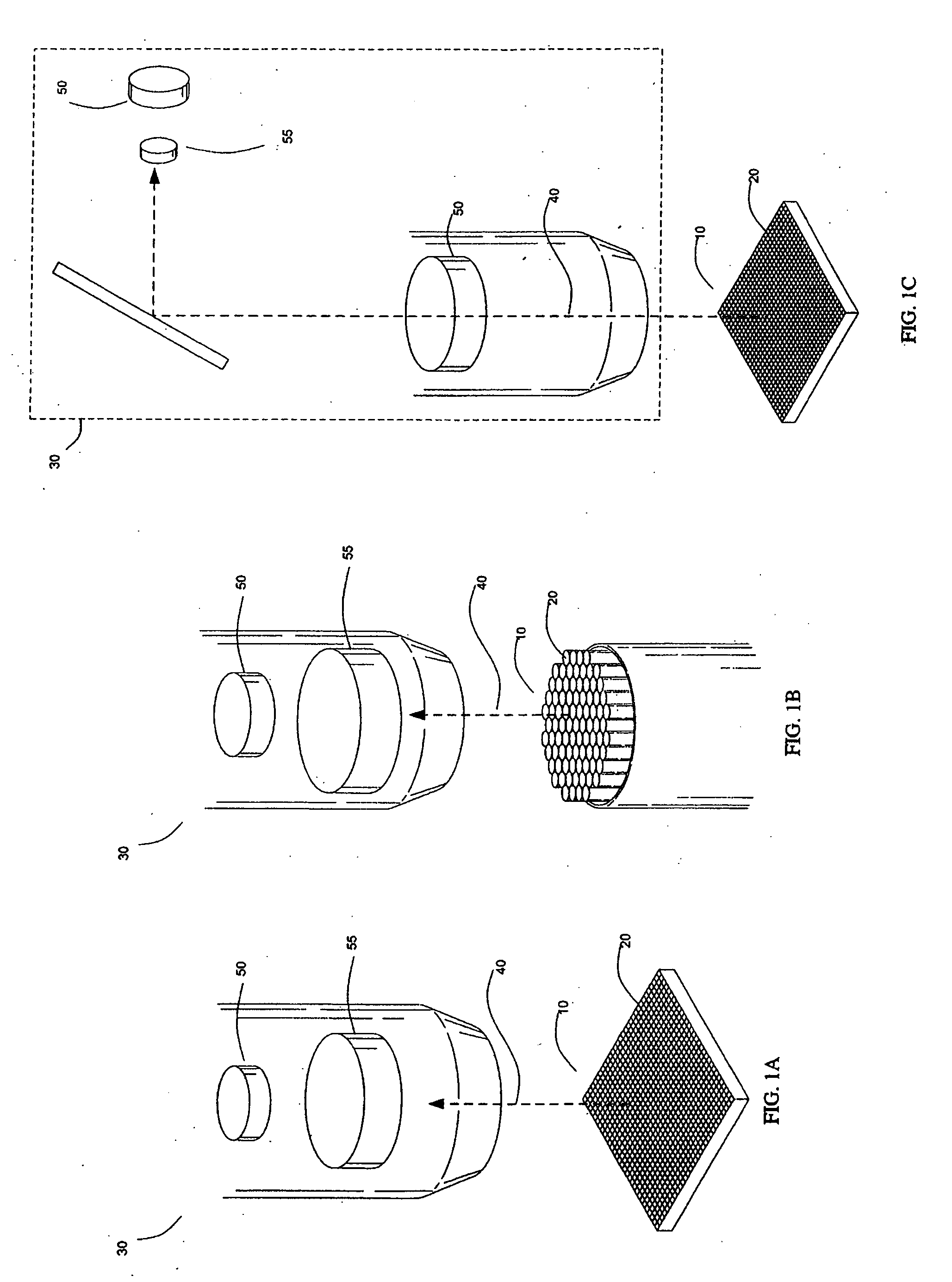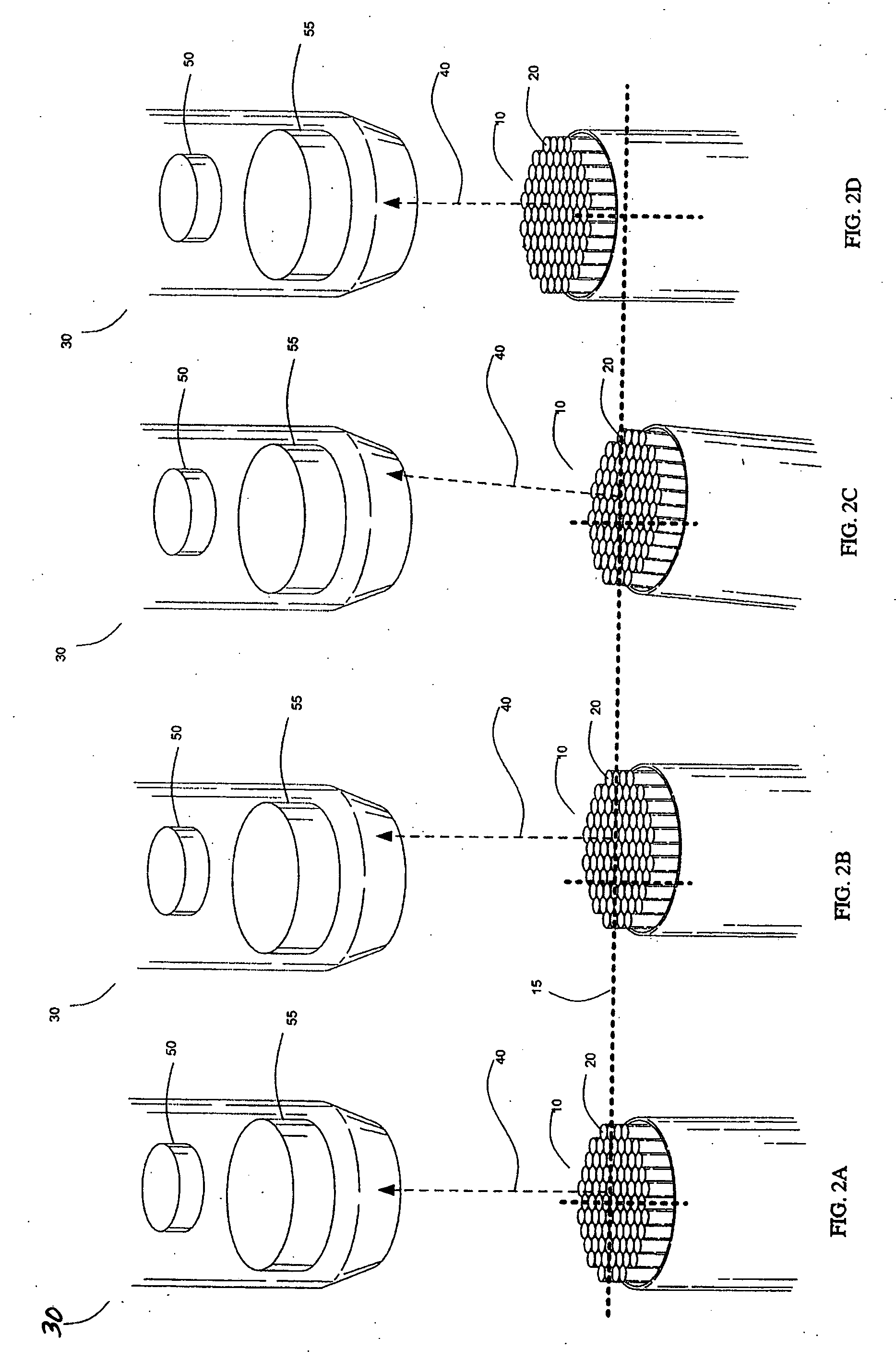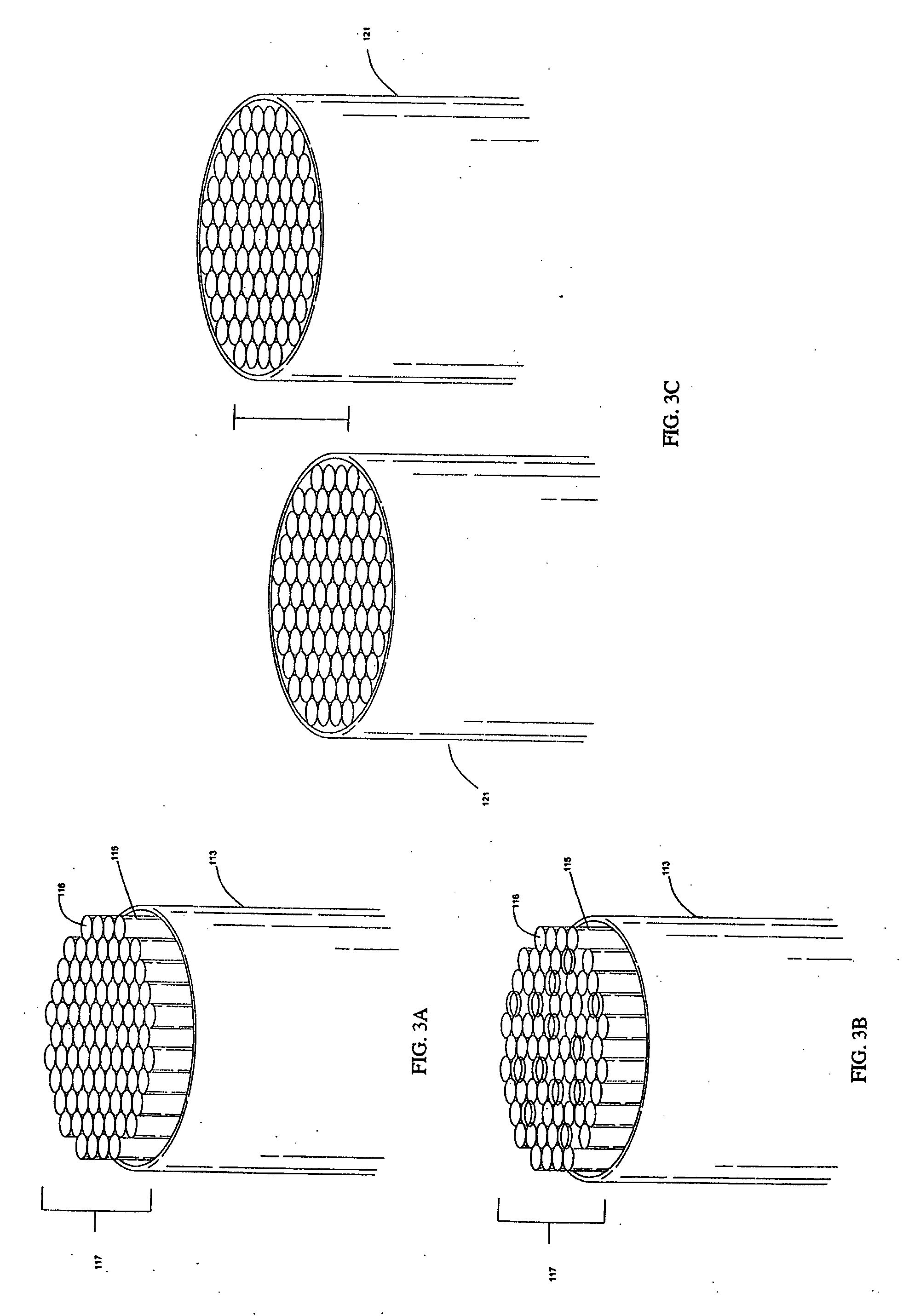Multiaxis focusing mechanism for microarray analysis
a microarray and multi-axis technology, applied in the direction of material analysis, biochemistry apparatus and processes, instruments, etc., can solve the problems of signal acquisition, imaging and analysis problems, deviations such as these, and achieve the effect of reducing target position errors
- Summary
- Abstract
- Description
- Claims
- Application Information
AI Technical Summary
Benefits of technology
Problems solved by technology
Method used
Image
Examples
Embodiment Construction
[0046] These and other aspects, advantages, and novel features of the present teachings will become apparent upon reading the following detailed description and upon reference to the accompanying drawings. In the drawings, similar elements have similar reference numerals.
[0047] The system and methods disclosed herein possess a wide range of applicability and, in particular, may be used in conjunction with visible / fluorescent label detection associated with array-based analysis methods and platforms. By way of introduction, array detection technologies encompass a number of different analytical platforms that may be used to detect the presence of one or more target species (e.g. DNA, RNA, proteins, and other biological and non-biological molecules). These technologies have the potential to selectively and simultaneously detect and / or monitor the presence and / or concentration of many hundreds, if not thousands, different molecules or species contained within one or more samples. Addi...
PUM
| Property | Measurement | Unit |
|---|---|---|
| diameter | aaaaa | aaaaa |
| surface “roughness | aaaaa | aaaaa |
| surface “roughness | aaaaa | aaaaa |
Abstract
Description
Claims
Application Information
 Login to View More
Login to View More - R&D
- Intellectual Property
- Life Sciences
- Materials
- Tech Scout
- Unparalleled Data Quality
- Higher Quality Content
- 60% Fewer Hallucinations
Browse by: Latest US Patents, China's latest patents, Technical Efficacy Thesaurus, Application Domain, Technology Topic, Popular Technical Reports.
© 2025 PatSnap. All rights reserved.Legal|Privacy policy|Modern Slavery Act Transparency Statement|Sitemap|About US| Contact US: help@patsnap.com



